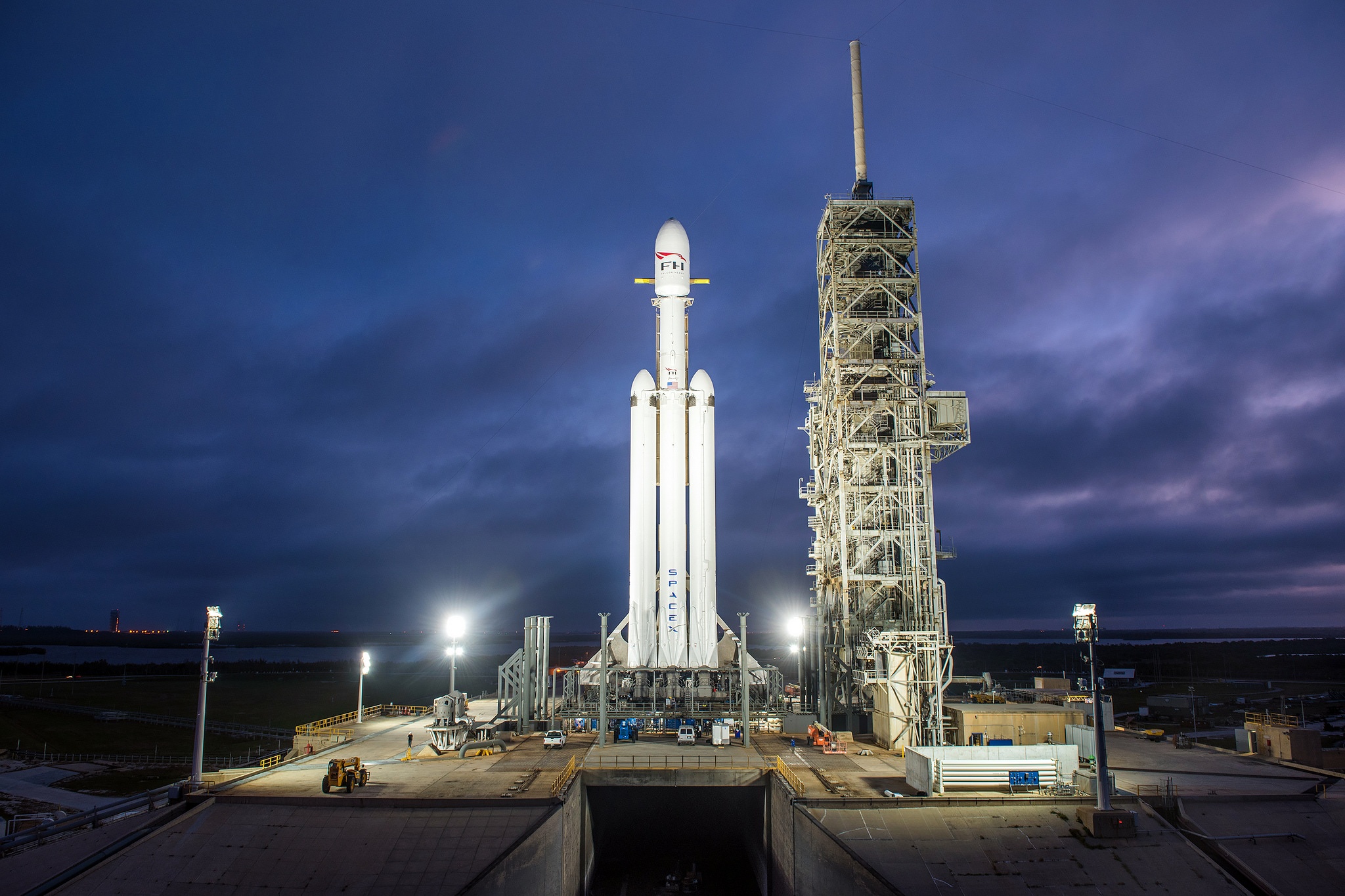You and your students have no doubt heard of SpaceX, the (relatively) new rocket company run by internet billionaire Elon Musk, whose audacious success and outrageous stunts have taken the spaceflight world by storm.
There are lessons in the way SpaceX does business that can be applied to your classroom activities, especially where they pertain to experience-based learning.
 Photo courtesy SpaceX
Photo courtesy SpaceX
1. Dream Big
SpaceX was started with the business goal of colonizing Mars, which is certainly dreaming big. It may seem as though they've forgotten that goal in favor of building rockets, but in fact the rockets are an integral part of that goal. By building (and selling rides on) larger and larger rockets, SpaceX is literally building a highway to Mars, where none now exists.
Dream big, but come up with a plan where the interim steps are self-supporting (you still learn and accomplish things) and still lead you to your long-term goal. This is practically the definition of K-through-college education.
2. Question Everything
A lot of companies claim they're going to "disrupt" one industry or another. SpaceX is one of the few that may actually do that. Rather than just follow tradition, SpaceX examined every assumption to find places they could dramatically lower costs.
For example, rocket flights have traditionally been extremely expensive because rockets need to be built to exacting precision — yet they are only used once and then discarded. SpaceX realized that by building their rocket stages a bit bigger (around 30%), they could use the extra fuel (and a lot of complex engineering) to softly land it so that it could be used again. Since a rocket stage costs around $50 million to build — but the fuel only costs a few hundred thousand dollars — this represents a hundredfold reduction in launch costs, which SpaceX can (at least partially) pass on to consumers.
We typically don't think about why we do the myriad things in our daily lives, or the larger social/political/economic systems that humanity has come up with over thousands of years. Kids are great at asking why and noticing where things could be different, and maybe better. Take advantage of this!
3. Find Resources
Many small (and a few large) companies have tried to revolutionize space travel and failed, mainly because they ran out of money. Aerospace engineering is very expensive, and even with the best of intentions you can't always do it cheaply. SpaceX survived the expensive, failure-prone early days because Elon Musk had already made a fortune during the dawn of the internet, much of which he personally invested in SpaceX. But even with that backing plus additional investors, SpaceX almost ran out of money before they finally had a successful flight.
The classroom isn't quite as expensive as space travel, but it has the same money problems. Budgets are tight everywhere, and although you can do a lot with nearly free materials like cardboard and glue, working with electronics and computers takes greater resources. It's unfortunate that educators need to add fundraising to their already full workloads, but until things improve, it's necessary. Be proactive. Seek out donations, opportunities and grants.
 Photo courtesy SpaceX
Photo courtesy SpaceX
4. Fail Forward
SpaceX was in unknown territory when they were trying to vastly improve the way rockets are launched. They tried a lot of things that didn't work, often spectacularly. But these "failures" were successes in that each failure showed them what didn't work and guided them toward the things that do.
Failure is the best teacher in the classroom as well. When student constructions fail, always take the time to discuss why — and what could be done differently next time. Most of all, try to avoid the stigma that failure equals losing. On the contrary; if you're not failing, it means you're not trying hard enough.
5. Look For Free Opportunities to Test
As we mentioned above, failure is the best teacher. So how do you test your product to failure when your product is an expensive cargo rocket and your customers demand a 100 percent success rate?
In a traditional rocket launch, once each rocket stage has done its work and exhausted its fuel, it is jettisoned, falls into the sea, and is lost forever. SpaceX cleverly realized that once a rocket stage is jettisoned, they could do whatever they wanted with it without affecting the success of the primary mission. In the 10 minutes they had before the expended stages crashed into the sea, they quietly performed maneuvering experiments, learning how the stages behaved aerodynamically and how to control them. On each flight they tried more and more complex maneuvers, eventually slowing them down and performing "practice" landings on the open water. Finally they were ready to try landings on their uncrewed barge. There were many fiery failures there as well, but they learned more and more each time, eventually landing successfully, and later reliably.
What SpaceX did was effectively dumpster diving: experimenting with something that had already been discarded so nobody would be upset if it broke in the process. Keep your eyes open for sources of discarded but still-working equipment. Technology depreciates quickly, and older equipment (especially if the owners know it's going to a classroom) can sometimes be acquired for the cost of hauling it away.
 Photo courtesy SpaceX
Photo courtesy SpaceX
6. Have Fun!
On the first flight of the Falcon Heavy, SpaceX's largest rocket to date, the cargo was Elon Musk's personal red sports car, surrounded by cameras providing live views as it left Earth.
This was done for several reasons. One was that the first launch of a new rocket is very risky, especially one this powerful. There was a very good chance the rocket might have exploded in flight or even on the pad. Not many spacecraft builders were interested in taking that risk.
Another reason was that it was fun. Elon has enough money and SpaceX has had enough success to occasionally set seriousness aside and do something wonderfully silly. Perhaps they did it just to entertain Elon, his SpaceX employees and, as it turned out, the entire world.
Not everything you do in class needs to be serious. Every once in a while, do something ridiculous. (And read on to hear how it can work in your favor.)
7. Marketing Matters
A more pragmatic reason that Elon launched a sports car into space was that marketing matters. Pictures of the car in outer space caused a sensation — far more than pictures of a legitimate mission would have (for better or worse). Elon knows that showmanship is part of success; the more that people know about what you've accomplished, the greater the returns in customers, investors, etc.
It's a bit trickier, but the same principle can apply in your classroom. Social media has made it possible for classroom projects to "go viral" (i.e., be so amazing that millions of people share it with one another). This requires two things:
One, the project must be amazing. It's difficult and often counterproductive to try to force this to happen, so serendipity is the way to go. Pay attention to your students' ideas, even when they're joking. If they suggest doing something outrageous (in a good way), take a bit of time to talk about whether it's remotely possible (or some descoped version that's more practical), and then suggest actually doing it. You may find that the more ridiculous the idea, the more enthusiastic the response may be, even if it will require extra (after-school) work.
Two, you'll need to get the finished project (or even its failure!) onto social media. This may not be practical because of privacy concerns. Sharing pictures of students who are minors requires getting releases signed by their parents and the permission of the school/district. Check with your administration for details about your specific policy; some schools have official social media channels and people who would be happy to help you post your content.
Even after all that work there's no guarantee that something will go viral. But if it does, even the temporary fame your classroom gets will be noticed by your administration and community, and may help provide visibility during budget discussions as well as a boost to your own career. Schools and other institutions know that marketing matters and almost always welcome good publicity.
Finally...
Most of all, keep an eye on what SpaceX and other innovative companies are up to next. In SpaceX's case it will be even bigger rockets to help get people to Mars! And think about what lessons you can apply from their successes and failures to your classroom.


teaching tools